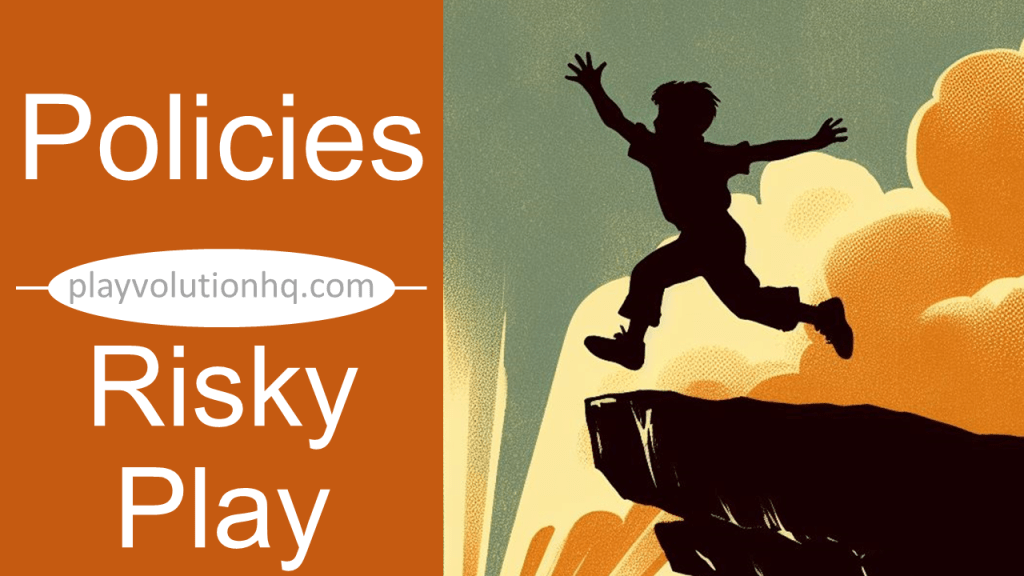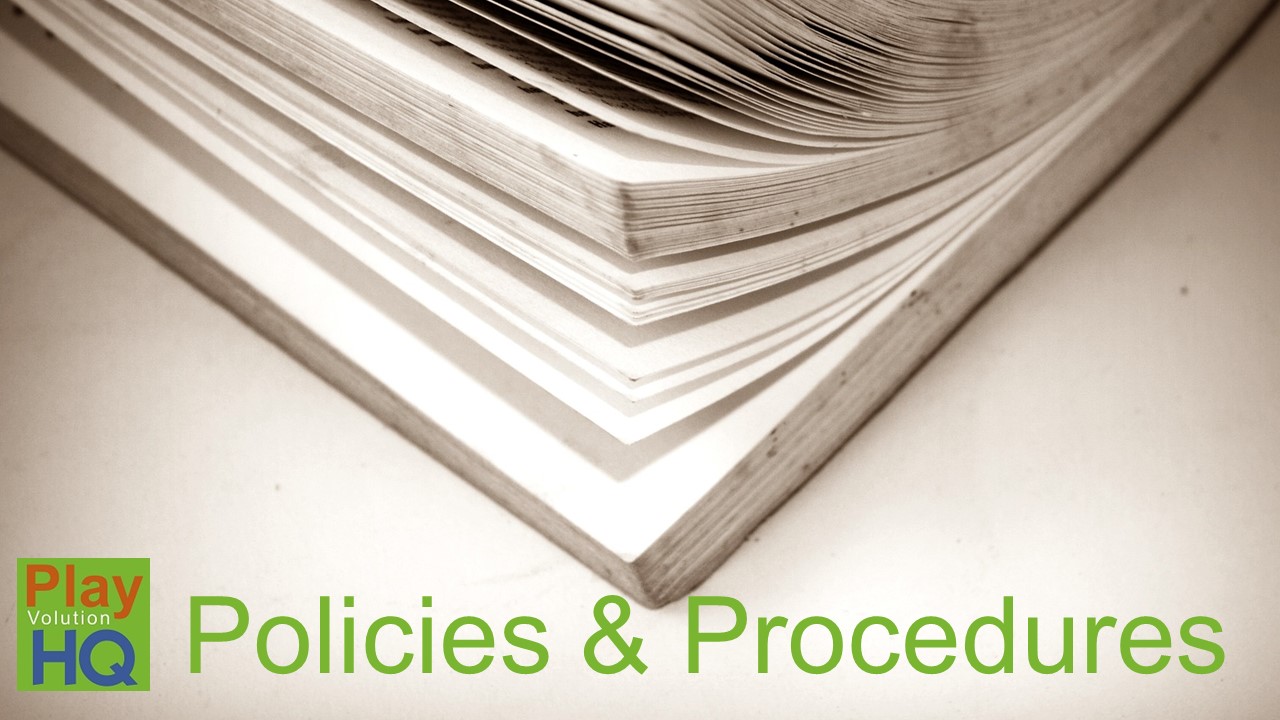
Table of Contents
In recent years, there has been a growing recognition of the importance of risky play in child development. Risky play involves activities that push children’s boundaries, fostering resilience, problem-solving skills, and emotional regulation. Children engage in 4 types of risk-taking in their play: physical, social, emotional, and intellectual.
When creating policy and procedures around this topic, it is crucial to balance ensuring safety and allowing children to engage in adventurous, exploratory play.
Purpose
A thoughtful risky play policy delineates the boundaries and expectations surrounding such play and assures parents, staff, and administrators are all on the same page. This policy should:
- Enhance Learning—Exposure to manageable risks fosters problem-solving skills and creativity, promoting a deeper understanding of cause and effect.
- Mitigate Hazards—The primary role of adults in supporting risky play is hazard mitigation. This involves addressing hidden or unanticipated dangers kids might miss when taking risks.
- Ensure Health And Well-Being—Embracing risk can improve physical health and well-being as children develop strength, coordination, and spatial awareness.
- Cultivate Risk Literacy—By engaging in risky play, children learn to assess and manage risks, a crucial life skill for adulthood.
Where To Include
At Playvolution HQ, we recommend using the Three Handbook Method and adding this policy to your Operating Handbook.
Considerations
Consider addressing the following topics when creating a policy and procedures for risky play:
- Risk Assessment—To keep kids safe, programs should have a plan to identify hazards in their play environments. Such assessments should also differentiate between acceptable risks that promote learning and unacceptable risks that pose serious threats.
- Flexibility And Individualization—Recognizing and accommodating children’s unique needs and preferences is essential. Risky play should be personalized based on a child’s temperament and developmental stage rather than chronological age.
- Documentation And Reflection—Keeping records of risky play activities, incidents, and observations and then reviewing, reflecting, and acting on those records is essential.
- Open Communication—It is beneficial to communicate the value of risky play to parents during enrollment and keep them informed about activities and safety measures as time passes. It helps them buy into a type of play they may have misgivings about.
Real-World Risky Play Policies
NOTE: The following samples are real-world examples relating to this post’s topic and are provided as a reference for creating your own policies and procedures. Sharing them here is not a recommendation of their content.
This post is intended to spark reflection and suggest ways of addressing the topic covered when writing or updating policies and procedures. Your policies and procedures should be written to meet your program’s needs and unique circumstances.
Browse More Policy & Procedure Resources Here
Example 1
Nature learning and risky play
Our outdoor yard is a large open space where children can explore nature and all its wonder. Filled with loose parts and opportunities for children to get messy, as they engage in play that encourages them to take and manage risks. We know children learn by experience, they are intrinsically motivated to push boundaries in order to assess what they can and cannot do. We provide risks, not hazards, for children in a controlled environment. (0053)
Example 2
We encourage students to question, to take risks and to think independently, helping them progress from concrete, multi-sensory experiences to abstract thinking. (0045)
Example 3
A prerequisite for all learning is the ability to take risks. (0039)
Example 4
We encourage children to explore materials, make mistakes and take risks without fears of failure. (0090)
Sample Risky Play Policy
This sample policy for the fictitious Playvolution Child Care Institute incorporates the above considerations and uses our recommended 5 policy headings. It is only intended as a guideline. Your policy and procedures relating to this topic should be unique to your program.
Purpose
The Playvolution Child Care Institute recognizes the importance of risky play in fostering holistic child development. Such play promotes physical development, improves sensory integration, develops essential life skills, builds resilience, fosters a love for learning, and more. Our goal is to balance the benefits of risky play with the need for safety.
Policy
Risky play supporting children’s developmentally appropriate physical, social, emotional, and intellectual risk-taking is integral to our curriculum.
Procedures
The Playvolution Child Care Institute will do the following to institute the above policy:
- Playvolution Child Care Institute will communicate the importance of risky play to parents and staff during onboarding and through conversations, newsletters, social media posts, and parent-teacher conferences. We will highlight the benefits, address concerns, and emphasize our commitment to a safe and enriching environment for all children.
- Staff will conduct a comprehensive benefit/risk assessment of play areas, identifying and mitigating potential hazards.
- Staff will conduct comprehensive benefit/risk assessments of potentially dangerous activities, identifying and mitigating potential hazards.
- Developmentally appropriate, child-initiated risky play will be supported across the curriculum.
- Ongoing staff training will equip educators with the skills and knowledge necessary for effective risk management and supervision. Parents will also be welcome to attend these trainings.
- Parents will sign a memorandum of understanding during onboarding, declaring they understand the value of developmentally appropriate risky play in all its forms and consenting to their child’s participation.
- Safety measures will be consistently enforced, including proper supervision, well-maintained equipment, and clear guidelines for staff and children.
- Risky play policy and related procedures will be reviewed biannually, with adjustments made to address emerging risks or changes in best practices.
Notes
- Playvolution Child Care Institute will maintain a documentation log that includes records of risky play activities, incidents, and staff reflections. This log will be a valuable tool for continuous improvement and adherence to best practices in risky play.
- Here are related resources:
- Risky Play
- Risk
- Free Forms | Benefit And Risk Assessment
- Understanding Danger, Hazard, And Risk
- Risky Play Memorandum Of Understanding
- Early Learning Physical Hazard Rating Matrix
- 4 Types Of Early Learning Risk-Taking
- Free Forms | Risky Play Observation Form
- Embracing Risk
- Adventure: The Value Of Risk In Children’s Play
- Ellen Sandseter’s 6 Categories Of Risky Play
- Risk And Adventure In Early Years Outdoor Play
- Adventures In Risky Play: What Is Your Yes?
Tracking
CI-2.6 V-1.0 Approved by Executive Committee effective 04/16/2025
Brought to you by Explorations Early Learning
Contribute content to Playvolution HQ
Related Content


Browse Trainings
Post Author
Jeff Johnson is an early learning trainer, podcaster, and author who founded Explorations Early Learning, Playvolution HQ, and Play Haven.


Leave a Reply